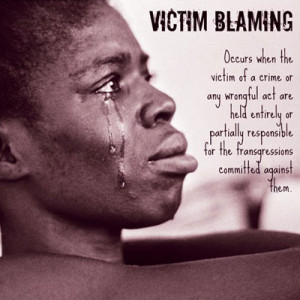 Negative portrayals of shooting victims lead to victim blaming
Negative portrayals of shooting victims lead to victim blaming
DURHAM, N.C. — Negative portrayal of a shooting victim can lead people to blame the victim for his own death and to sympathize with the shooter, says a new study by researchers at Duke Univerity and Simmons College.
After reading a negative biographical sketch about the victim of a fatal shooting, study participants favored lighter sentences for the shooter, said study co-author Sarah Gaither, an assistant professor of psychology at Duke.
“Reading negative information about the shooting victim not only affected attitudes about the victim, it also altered attitudes about the shooter,” Gaither said. “That surprised us.”
The “blame-the-victim” effect occurred regardless of whether the shooting victim was white or black, Gaither said.
The new findings appear in the Dec-ember issue of the Journal of Social Issues.
In the study, researchers gave participants a written account of a fatal shooting of an unarmed man. Some victims were portrayed in negative terms of the sort often associated with Black male stereo-types. Specifically, the victim was described as a quick-tempered high school dropout who had been raised by his grandmother in a housing project and had been in frequent trouble with the law.
Other study participants, meanwhile, were given positive information about the victim. In that scenario, the victim was described as a college student who grew up in a middle-class suburb to a banker and English professor.
Some of the “good” victims were described as Black and some as white. Likewise, the “bad” shooting victims included both black and white males.
After reading positive information about a shooting victim, participants were more likely to recommend that the shooter be charged with first-degree or second-degree murder. When the victim was described in negative ways, study participants were more likely to view the homicide as justified and to recommend a lighter sentence for the shooter.
This held true whether the shooting victim was Black
or white. However, respondents recommended harsher sentences when the victim and the perpetrator were of different races — when a white man shot a Black man or a Black man shot a white man.
The results suggest that news reports about a shooting victim’s biography can shape public opinion about a shooter, she added.
“These results highlight the powerful impact that the media can have in reporting shooting incidents,” and suggest that media reports have the potential to affect whether a suspect gets a fair trial, the authors suggest.
CITATION: “Black Racial Stereotypes and Victim Blaming: Implications for Media Coverage and Criminal Proceedings in Cases of Police Violence against Racial and Ethnic Minorities,” Kristin N. Dukes and Sarah E. Gaither. Journal of Social Issues, December 2017. DOI: 10.1111/josi.12248
A digital version of this story is available at: https://today.duke.edu/2017/12/negative-portrayals-shooting-victims-lead-victim-blaming.

